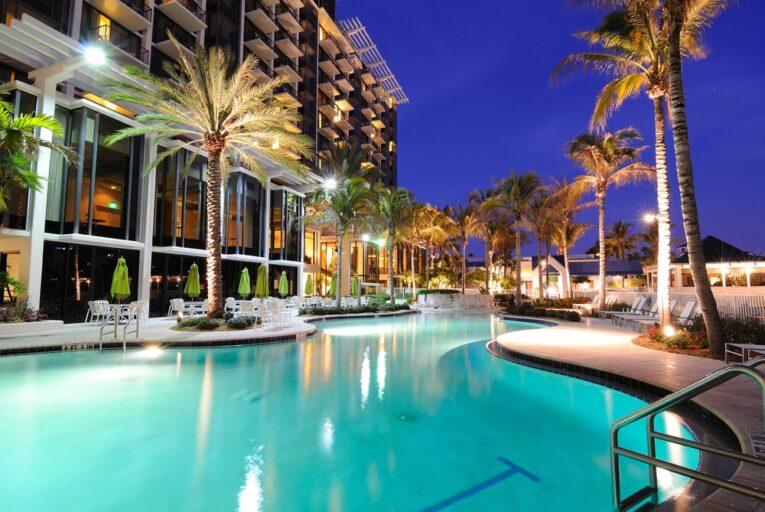
7 Hotel Maintenance Changes You Want to Make
A little over a year ago, we posted the Top 10 Hotel Preventive Maintenance Tips that recommended hotels adopt a maintenance strategy target of 80% proactive maintenance. In this post we go a little further and take a look at why good hotel maintenance can significantly change the bottom line of hotel operating costs.
How Hotel Maintenance Affects Profitability
It would be nice if all hotels under a brand name were newly constructed, had state-of-the-art predictive technologies to pinpoint exactly when an asset was going to need repair or maintenance and of course was fully staffed with experience engineers capable of handling all issues.

Hotel maintenance generally comes in 4 areas which are:
- Emergency: Includes unexpected asset or equipment failures that require immediate attention.
- Routine: Includes rounds, monitoring equipment, start-up and shut down of chillers and pumps and so on.
- Preventive: Includes scheduled hotel work management such as inspections, preventive maintenance, and other activities designed to prevent unplanned maintenance repairs as well as extend an asset’s useful lifecycle.
- Corrective: Corrective maintenance falls into a grey area but will include maintenance activities designed to restore assets to optimal or normal working order. This type of maintenance can be planned or unplanned.
It should be noted that the amount of corrective maintenance can be decreased by being more proactive. On the other hand, if the amount of corrective maintenance gets out of hand, hotel maintenance falls into a trap of fighting fires on a continual basis which decreases the amount of preventive maintenance that can be performed. The key to managing maintenance activity is knowing the condition of all hotel assets at any given point in time.
Unfortunately, the reality is too many hotels (newer and older) do not have an adequate maintenance plan that addresses how maintenance management will minimize operating costs by achieving a proactive maintenance goal of 80%.
“In hotels, the amount of energy use is affected by weather conditions, number of guestrooms and occupancy rate, number of food covers served and the operating efficiency of plants and equipment (Lee et al., 2000)….Without a decent control, the energy consumption of fuel oil, gas and electricity, even in a well-managed hotel, will be as much as 457 kWh/yr.m2-floor-area (Lee et al., 2000). It is worth noting the results of industrial energy audits and case studies, which indicate that reduction in energy consumption from improved operation and maintenance activities can average between 8 and 12.5 per cent (Thumann, 1999).”
Source: Kenny Chan
When utility bills alone can cost over $1 million per year a 10% savings on maintenance expenses flows directly to the bottom line of a hotel P&L statement. In addition, when factoring in that the age of a hotel plays a significant role in determining ongoing maintenance costs it becomes clear that managing hotel maintenance costs must be a priority for senior management.
Suggested Hotel Maintenance Changes
To remain competitive and survive in a global marketplace, hotels should embrace the idea that asset and maintenance management visibility must be increased. This means that more senior level attention needs to be given to controlling maintenance expenses.
The keys to getting a better handle on maintenance costs are knowing your assets, organizing and scheduling work management, automating work processes such as work requests and work orders and tracking results. With this in mind the following are 7 suggested maintenance changes hotels can make to increase profitability.
Top 7 Hotel Maintenance Changes
- Know where all hotel assets are along with their asset detail such as description, date installed, costs, vendor, serial number, expected useful life, associated contracts etc.
- Inspect all hotel assets using a hotel inspection checklist to benchmark the condition of assets. This can be done using mobile devices for increased speed.
- Schedule maintenance on each asset based upon age, condition, value, impact on guests etc. to ensure they are in proper working order.
- Schedule rounds and preventive maintenance on assets to minimize surprises and unplanned emergency repairs.
- Empower maintenance staff with mobile devices capable of transmitting work requests and work orders directly to hotel maintenance management.
- Track asset work management history and evaluate monthly to identify hotel maintenance trends, assets that had too many work orders, bottlenecks, energy drains and potential capital expenditure issues.
- Set a target of a 10% increase in proactive maintenance on a monthly basis until the ultimate goal of 80% of total hotel maintenance being proactive is achieved. Concentrate initial efforts on the 20% of assets that require 80% of the work.
The hotel maintenance changes above are common sense applied to an operational environment. The foundation for a successful hotel maintenance operation is maintenance planning and execution using the right tools that can accomplish the desired goals. Without the right tools maintaining aging hotel assets can become a nightmare.
Avoiding the Hotel Maintenance Nightmare
Achieving hotel maintenance success means overcoming the logistics of tracking the condition and maintenance of thousands of assets. Archaic manual systems and spreadsheets just don’t cut it in today’s competitive environment because they are time consuming, cumbersome to manage and ineffective.
The tool of choice for hotels is a Computerized Maintenance Management Software (CMMS) system. Implementing a hotel CMMS gives senior management, hotel management and maintenance management the ability to make all of the suggested changes above.
Selecting the right CMMS is as crucial as making a maintenance plan. Hotel senior management should avoid off-the-shelf CMMS products that can’t be customized to meet management goals. On the other hand, the CMMS should be easy to use so that with proper training adoption rates are high.







